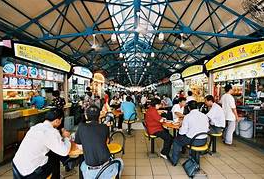New policies and initiatives aim to balance affordability for consumers, fair earnings for hawkers, and the preservation of Singapore’s hawker heritage.
SINGAPORE – As hawker centres continue to form the heart of Singapore’s food culture, the government is actively finding ways to sustain the hawker trade while addressing the challenges faced by both hawkers and consumers. On November 13, 2024, Senior Minister of State for Sustainability and the Environment Koh Poh Koon discussed key government initiatives to balance these challenges, as part of a debate triggered by a motion from the Progress Singapore Party (PSP).
Key Policies for Sustainability
The government aims to balance three main objectives: ensuring affordable food options for Singaporeans, providing hawkers with decent livelihoods, and preserving the unique cultural heritage of hawker centres, which was added to UNESCO’s Representative List of Intangible Cultural Heritage in December 2020. However, this balance is increasingly difficult due to the rising costs of ingredients and global inflation.
Dr. Koh pointed out that while consumers expect affordable food, hawkers face rising costs that impact their ability to earn a sustainable income. The government also acknowledged that attracting young Singaporeans into the trade is essential, but the cost pressures make the hawker trade less appealing compared to other career opportunities.
New Rent System and Other Measures
To address the rising rents of hawker stalls, the National Environment Agency (NEA) introduced a new initiative starting in November 2024. Under the revised rental system, hawkers who submit high bids for stalls will no longer see their rents drop immediately to market rates after their three-year tenancy. This aims to encourage more cautious and thoughtful bidding, especially in an environment where competition for prime locations drives up costs.
While existing hawkers will not be affected, this new system is set to influence the pricing dynamics of the 200 market and cooked food stalls tendered each year, as there are over 6,000 cooked food stalls and more than 7,000 market stalls managed by the NEA.
Support for the Hawker Trade
The debate saw various suggestions put forth by MPs, including allowing hawkers to hire foreign work-permit holders as stall assistants to address manpower shortages. While Dr. Koh emphasized that maintaining the local identity of the trade is crucial, he acknowledged that the government will increase the pool of eligible foreign workers starting in 2025, allowing hawkers more flexibility in staffing.
Other suggestions included a shift from the current tender system to balloting, and implementing fixed rent models to curb rising costs. Dr. Koh cautioned that balloting could lead to an excess of frivolous applications, making it harder for serious hawkers to obtain a stall. The introduction of a fixed rent model, while appealing in theory, could also result in higher rents for many hawkers due to the discrepancy between current and market rates.
Social Enterprise Hawker Centres (SEHC)
Addressing suggestions for phasing out the socially conscious enterprise model for hawker centres, Dr. Koh defended the current system, which ensures that hawker centres are managed with business acumen, helping new entrants succeed. The model has proven effective, with high satisfaction rates among both patrons and stallholders. While NEA will continue to refine this approach, Dr. Koh emphasized the importance of a balanced, pragmatic strategy to meet both hawker and consumer needs.
Government’s Role in Supporting Hawkers
Lastly, Dr. Koh noted that the government has been supporting hawkers for decades, providing a conducive operating environment by building hawker centres and offering assistance with rising costs. However, he acknowledged that while bulk purchasing programs have been introduced, not all hawkers have embraced them due to preferences for specific suppliers or the quality of ingredients.
These ongoing efforts highlight the government’s commitment to preserving Singapore’s hawker heritage while ensuring that hawkers can thrive despite increasing pressures.


